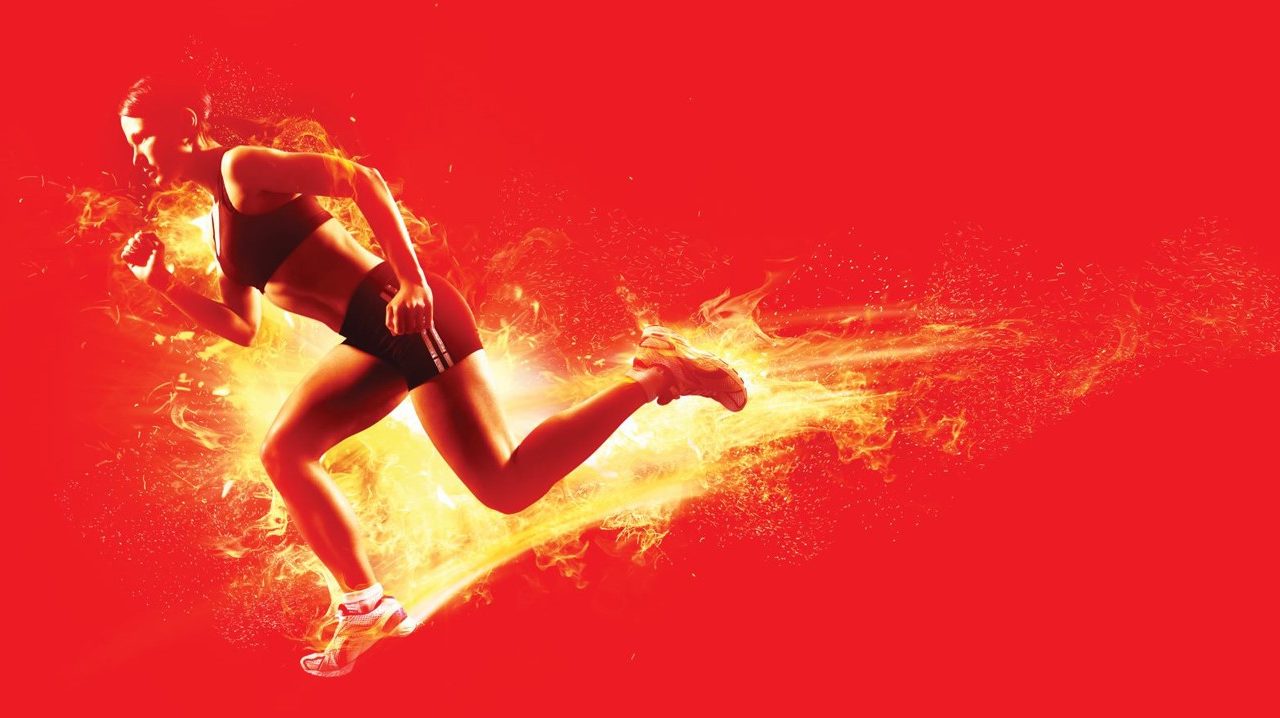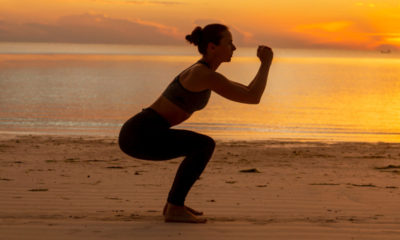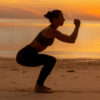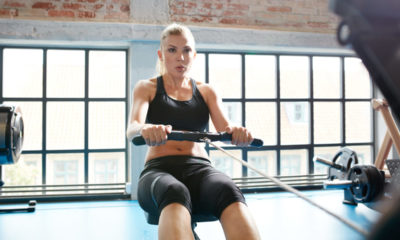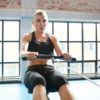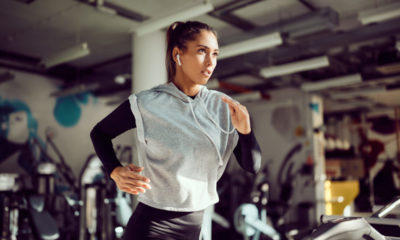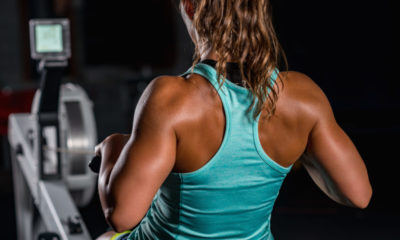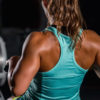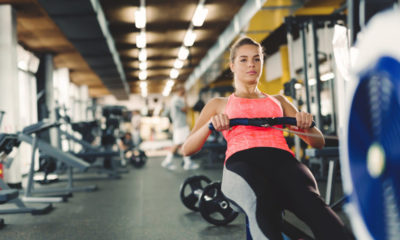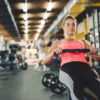Fitness
Burn, Baby Burn
Whether you’re that woman who’s always sneaking up the dial on the heater when no one’s looking or you break into a sweat at the mere hint of a workout, there’s a way you can harness your personal inner thermostat to your advantage. But first, it’s important to understand how and why our bodies regulate our temperatures.
The average temperature range, overall, of the human body is between 97.7ºF and 99.5º (36.5 and 37.5C), but while men and women don’t differ much in that regard, there are differences when it comes to where that temperature is measured. Women, for example, tend to have a higher core body temperature. And, they also tend to have a lower skin temperature. This difference might explain why the temperature level in the home is a common source of arguments for about one third of couples, according to research by Corgi Homeplan, thermostat and boiler installation company. The same research found that four out of ten women secretly turn up the temperature, hoping their partner won’t notice. It’s not the only research to show that women prefer warmer temps – a study undertaken in Holland pinpointed 2.5ºC as being the increase in heat women found most comfortable, compared to men. Those women may well be onto something – other research, published in >Plos One, showed that women who undertook math and verbal tests improved performance significantly when undertaking the tests in warmer temps. Men showed a slight, but less pronounced decrease in performance. It shows how everything is linked together tightly.
Gender Susceptibility
Men might be hairier, but they cope a little better with the colder climates so it’s time to understand why. Research published in >The Lancet found that when skin temperature was assessed, women’s hands became colder in cooler temperatures. The average temperature of a woman’s hand when exposed to cold was around 5.4ºF (3ºC) lower than that of men when exposed to the same lowering of temperature. There’s a reason for this and it’s down to estrogen. Estrogen has a slight thickening effect on your blood which means your blood doesn’t flow quite as quickly through capillaries – which are the tiny blood vessels that you have in your extremities, your feet, fingers, nose, ears etc. So when you get cold, the tips of your body parts feel colder more readily than a man’s because his blood is flowing just that little bit more efficiently and quickly to his extremities. To add to this estrogen-led issue, when you’re ovulating (around 14 days after the first day of your period) estrogen levels rise and it makes you even more prone to the cold fingertips and toes thing. So if you find yourself reaching your toes towards his warm legs more at certain times of the month, that’s why.
Then there’s your metabolism. If you’re a keen muscle builder, your metabolic rate is higher than the average woman’s. If, however, you’re more like the average woman, your metabolic rate is lower than the average man’s (purely because they tend to have more muscle mass naturally, lucky for them). Higher resting metabolism means higher blood flow (as well as burning more calories while doing nothing) and this helps keep those fingertips and toes warm even in colder temperatures.
Fitness Impacts
This difference in how our bodies work in response to heat or cold plays a big part in our fitness too. Being too cold (or too hot) at night also interferes with sleep. And you know what that means. Not just that you wake up feeling a little bit less sharp than the day before, but also with less energy or enthusiasm for that workout. Your muscles don’t get the same kind of quality rest as they would if you could sleep properly. Sleeping in a cold draft, for example, causes muscles to tense up. In fact, stiff neck – aka a sore levator scapula muscle – is often the result of a person sleeping where there’s a draft or cold air reaching the upper shoulder when a person is lying on their side. Similarly, if you feel cold in general, your muscles will tend to harden in response rather than relax. And that will leave you feeling far from gym-ready the following day.
This isn’t the time to be stoic, get yourself an electric blanket that goes under the sheets. You can warm up your side of the bed while your partner gets to stay as cold as they like, enjoy a proper night’s rest and really let those muscles relax.
Training Temps
But it’s not just about when you’re sleeping. Your muscles and heart and circulation all respond to the ambient heat you’re working out in too. When you exercise, your body temperature naturally rises, obviously. But as you continue to work out, more cells burn more fuel and that generates ever more heat. You start to go red, which is a sign that your body is sending more blood to those areas, and you’ll start to sweat, the body’s natural method to cool you down. And here’s the thing – the more your body is focused on cooling you down, sending blood to circulate to your skin, your outermost layer, to help cool you down, the less is reaching your muscles. That means your heart rate increases further but your muscles may not be getting what they need to pump hard and strong as you’d like. It’s made even worse if the air is humid too because then your skin’s sweat doesn’t evaporate as efficiently meaning your body is getting even hotter.
You might experience heat cramps in this kind of situation. This is where your muscles start to tighten and firm up in a painful way, leaving you struggling to continue. You might feel lightheaded and faint. If you allow yourself to continue, without giving your body a chance to cool down, you might suffer with heat exhaustion. This is when your body temperature reaches such a high level (above 104 degrees F) that you even stop sweating. Skin may feel dry to the touch and you could show symptoms such as confusion, headache, fainting, nausea, vomiting, fatigue, among others. And here’s a good reason to step out of the race or the gym any time you feel you might be showing any signs of heat fatigue – the only way to test your body temperature accurately if medical professionals suspect heat exhaustion is with a rectal thermometer. Enough said. This is because forehead or ear thermometers simply don’t give an accurate enough reading. Cooling yourself in this kind of situation should be done gradually – throwing yourself into an ice bath could cause your heart to be so overwhelmed by the change that you suffer with a heart attack. Instead, wrap wet cool towels on your neck, wrists, armpits, ankles and feet – areas where there are lots of blood vessels close to the surface of the skin making it a more efficient way of cooling down. Drinking at this time is obviously key too, as dehydration plays a major role in heat exhaustion.
Of course, if you happen to be moving to a hotter climate or are planning to work out while away on holiday somewhere warm, you should make an effort to acclimatize. But there are other non-travel related reasons why heat training can be beneficial. For example, research showed that heat acclimatization not only improved power output in cyclists, it also increased blood plasma volume and cardiac output in cooler >and hotter temperatures. So the benefits weren’t restrained only to working out in hot temps.
And it really does work. Olympic athletes have been known to do heat training when they know that the Olympics were to be held in a location where temps might get higher than back at home. So, for example, Haile Gebrselassie did heat training before winning in the 2009 Dubai marathon. What’s interesting, too, is that these athletes seem to sweat at a far higher rate than other athletes too – a result of the heat training that teaches the body how to adapt to the climatic conditions.
Heated Performance
The why of how your body acclimatizes to heat and improves performance is a little more complex. Firstly, heat training causes your body to produce less heat simply to ‘be’ than it would otherwise (a lot of energy goes into simply keeping you warm). Heat acclimitization also helps your body ‘learn’ how to sweat more and produce sweat more quickly. As was shown in the study mentioned above, heat training increases blood plasma volume. This means that there’s simply more of the good stuff in the blood – be it oxygen, nutrients or whatever – being pumped around your body at a given time. It also helps prevent the effects of dehydration, preventing the blood from becoming too ‘thick’ as a result of less liquid in the body. It even goes down to cell level with each cell developing more heat tolerance.
So, should we all be doing Body Pump with the heaters on? No – even advanced athletes die of heatstroke or exhaustion if they don’t approach their training carefully enough. Dehydration is a particular risk when doing any kind of heat training, but you may also discover that your body overcompensates and produces an excessive sweat response to working out in heat. What that means, in real life, is that your body begins to shed so much sweat that you’re dehydrating at a faster rate which isn’t desirable. Sweating also means losing sodium… something to be aware of if you do sweat a lot. It means that simply replacing that liquid in your body by drinking water may not be enough, you may need an electrolyte drink to ensure your muscles are getting what they need, though new research is starting to prove those supplement claims as dubious at best.
Action Plan
By now, you’re likely wondering how you can put this hot stuff to good use. The key is to start slow and work your way up to full on burn-baby-burn level of heat. Rather than begin by working out in the heat, just start by enjoying time in the sauna or steam room before or after your workouts. You may find that doing it beforehand makes you less able to complete your usual workout, and if that’s the case start by trying a sauna after exercise. Next, choose your favorite low-intensity exercise and do that in a heated setting. Yoga is a popular choice (but don’t be fooled into thinking it’s for the faint-hearted!) but there’s no reason why you can’t attempt Pilates, light weights, jogging etc on warmer days to begin with, building your way up to higher intensity exercise as you feel more comfortable with it.
Whatever you do, however, don’t give up on the cold, when it finally shows itself again. Working out in cold weather isn’t just a necessity (most of us don’t live in the Caribbean after all) it’s also another string to add to your fitness bow. And, like working out in heat, that’s because working out in the cold pushes your body in ways warmer or temperate climates just don’t. For example, research published in the >Journal of Clinical Endocrinology & Metabolism showed that cold weather workouts burned more calories than those done in warmer weather. Your body naturally needs to work harder, not just to move your muscles but also to keep you warm during a cold-weather workout. Thing is, that energy – glycogen – might be taken away from your muscles and used elsewhere in your body, leaving your muscles wanting. Which is why feeding your body during cold-weather training is as important as drinking during heat training. For example, research published in >Human Kinetics found that Navy Seals doing cold-weather training weren’t able to keep up their bodies’ demands for calories. The training was adjusted, with more carbohydrates given more frequently throughout the day. The lesson here is that cold will make your body work harder to produce the same movements it would in warmer weather – and that may be a good thing in terms of calorie burn, but in terms of building muscle it may not be. Cold will slow down all of your body’s responses, including blood being pumped around, your nervous system’s ability to contract and release muscles, and so on. So if your goal is building bigger, stronger muscles, lifting in the cold isn’t the way to go. If, however, you’re looking to burn some extra calories, hit those snowy streets by all means.
Whichever kind of temperature training you choose to do, the fact remains that estrogen will make you respond differently to any kind of temperature-based training than a guy. So if you feel like you need to turn up the heat a notch or two, just do it. We won’t tell anyone.
Words: Siski Green


